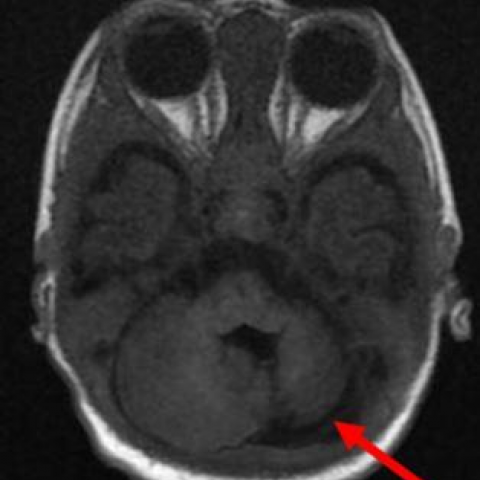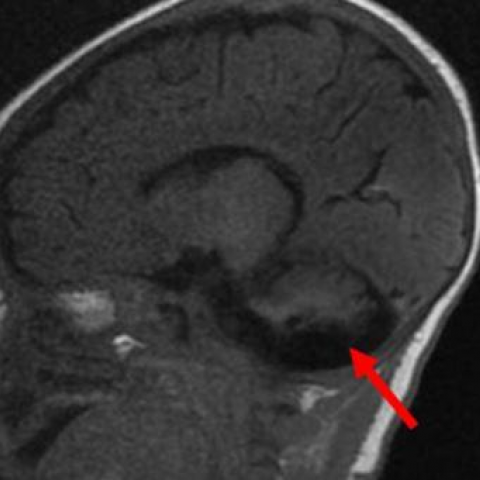Unilateral cerebellar hypoplasia - A case report
Section
Neuroradiology
Case Type
Clinical Cases
Authors
Madhuri Ghate, Rashmi Kotkar, Amol Gulhane
Krsna Diagnostics PVT LTD; Pawana Nagar Housing Society 411033 Chinchwad, India; Email:madhuri.ghate01@gmail.com
Patient
2 months, male
Categories
Procedure Education ; Special Focus Seizure disorders ;
FIGURE 1
Axial MRI BRAIN T1W image

Axial T1W MRI image shows left cerebellar hypoplasia (arrow).
Clinical History
A 2-month-old male child presented with seizures.
Imaging Findings
Plain MRI brain was advised which showed that the left cerebellar hemisphere was hypoplastic and was smaller in size compared to the right side (Fig. 1, 2, 3 and 4 - red arrow). The grey and white matter of the cerebellum was normal and did not show any signal changes. The fourth ventricle was normal. The cisterna magna was normal. The vertebral and basilar arteries showed normal flow voids.
Discussion
Differential Diagnosis List
Unilateral cerebellar hypoplasia.
Global cerebellar hypoplasia
Cerebellar hypoplasia with mainly vermis involvement
Final Diagnosis
FIGURE 2
Sagittal MRI BRAIN T1W image

T1W sagittal MRI image shows left cerebellar hypoplasia.
FIGURE 3
MRI BRAIN Coronal T2W image

T2W coronal MRI image shows left cerebellar hypoplasia (arrow).
FIGURE 4
MRI BRAIN Coronal 3D SPGR image

3D SPGR coronal MRI image shows left cerebellar hypoplasia (arrow).

